The terracotta temples of Bishnupur are beautiful and made of burnt earth or terracotta as it is called. They were built in the 17th Century by the Malla Kings in West Bengal. The beauty of the temples lies in the rust coloured hues and the carvings, pillars and domes. The picture above features the Rasmancha temple commissioned by Mallabhum king Hambir Malla Dev (Bir Hambir) in 1600 CE.
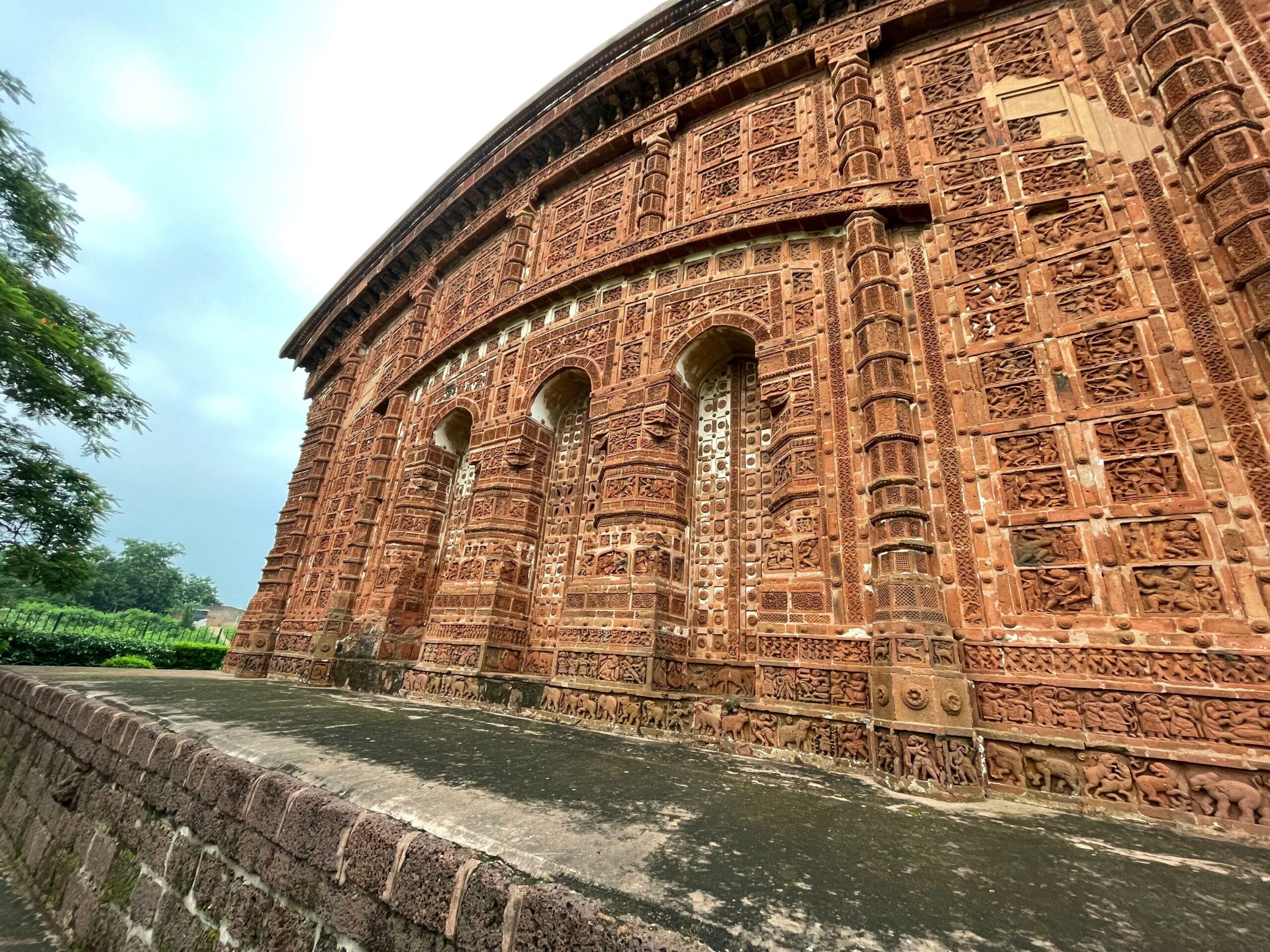
The ShyamRai temple is made of bricks with ornamental decorations in terracota that depict floral designs and Krishna leela. Malla king Raghunath Simha was the patron of the monument, 1643 CE.
Terracotta is artistic and sustainable. It was sourced locally, had minimal environmental impacts while extraction and is energy efficient because of passive heating and cooling.
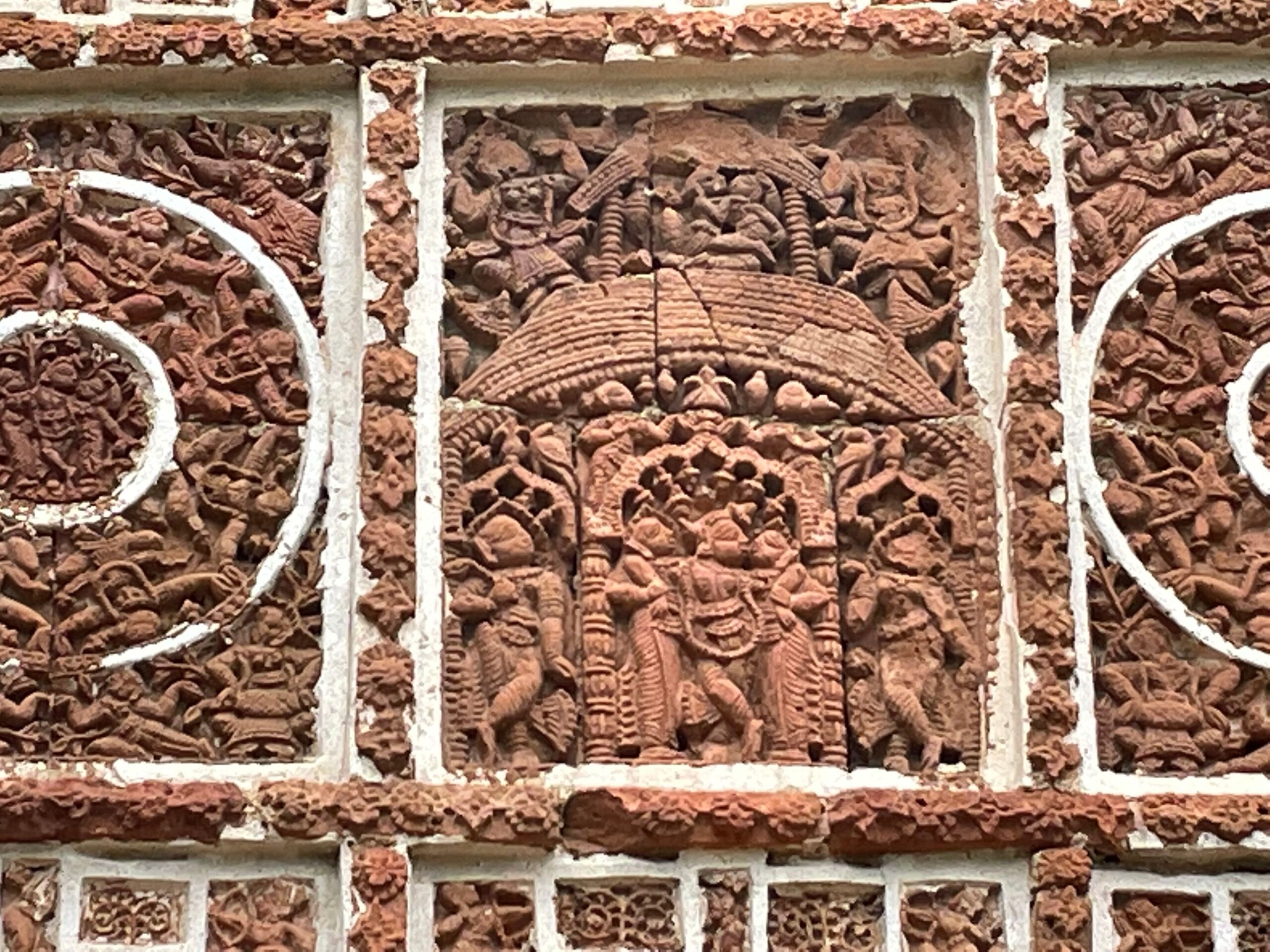
Design panels on the ShyamRai temple in Bishnupur
It is durable, weather resistant and requires minimal maintenance. As one can see, they have stood through centuries.
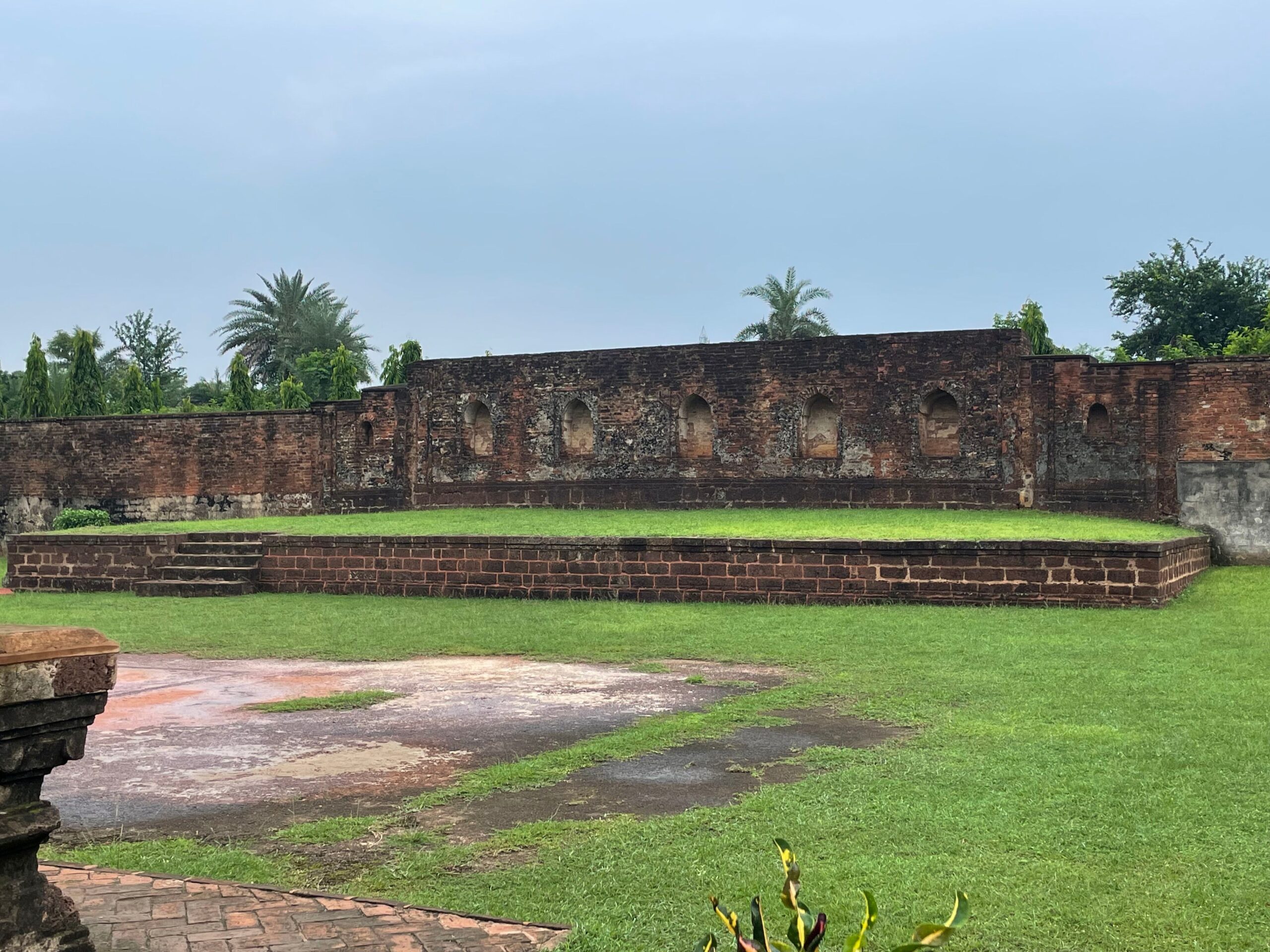
Surroundings of the Lalji temple
The floral, animal and Radha Krishna motifs have seeped into local traditions and folklore in the form of terracotta sculptures, jewellery and art such as the designs and motifs of Bishnupur sarees.
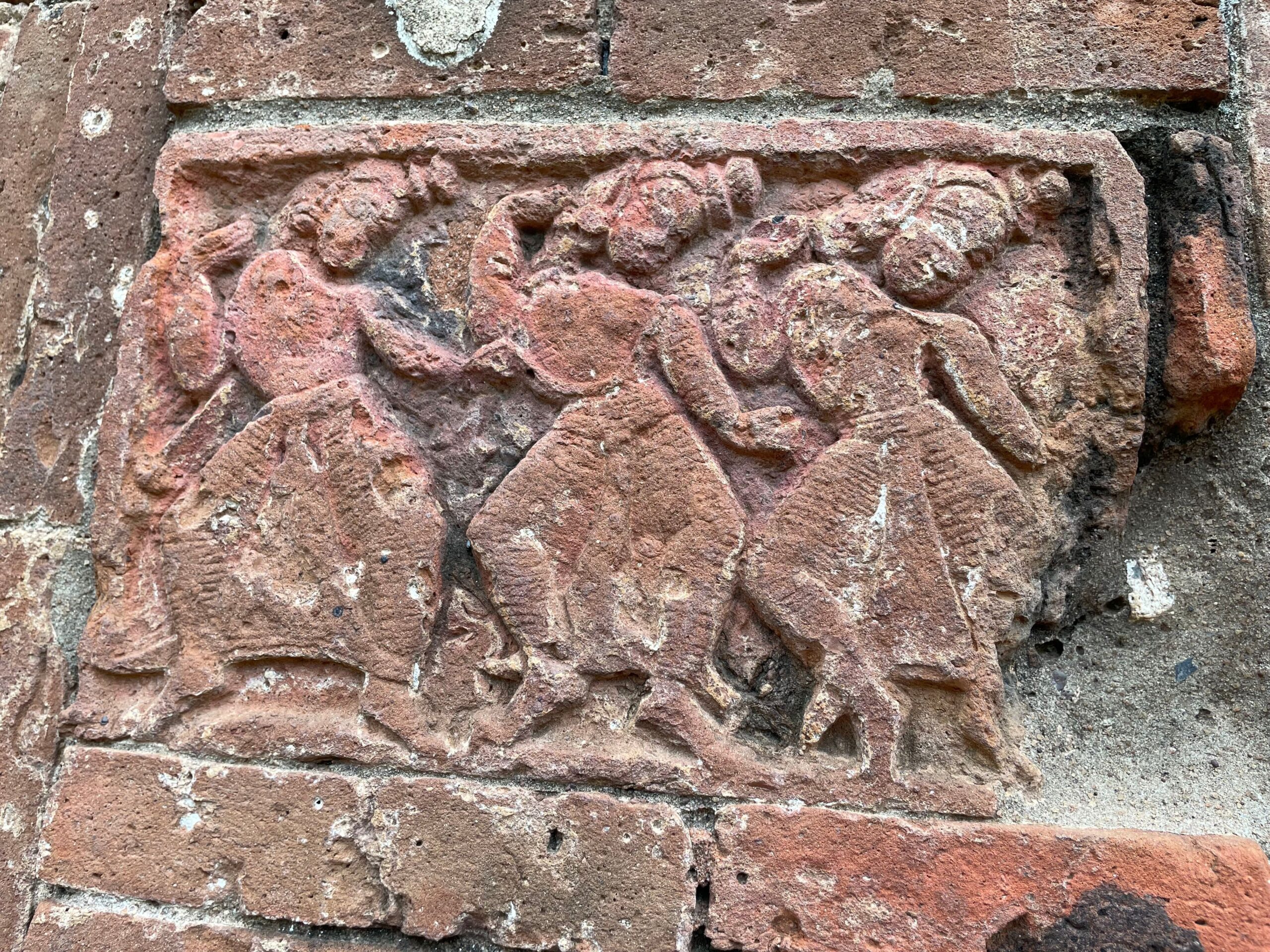
The carvings in terracota on the Rasmancha walls
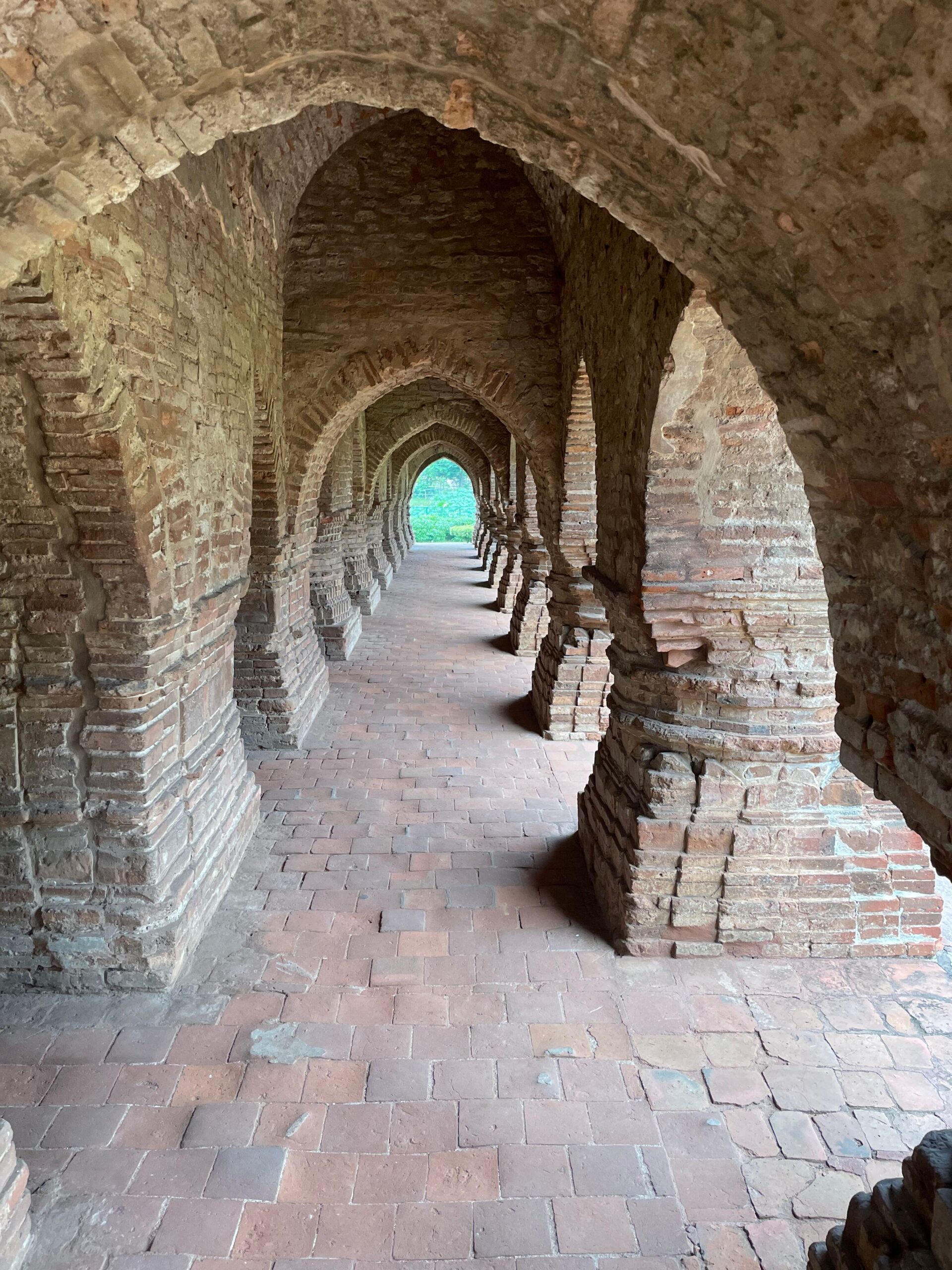
The stunning pillars of the Rasmancha
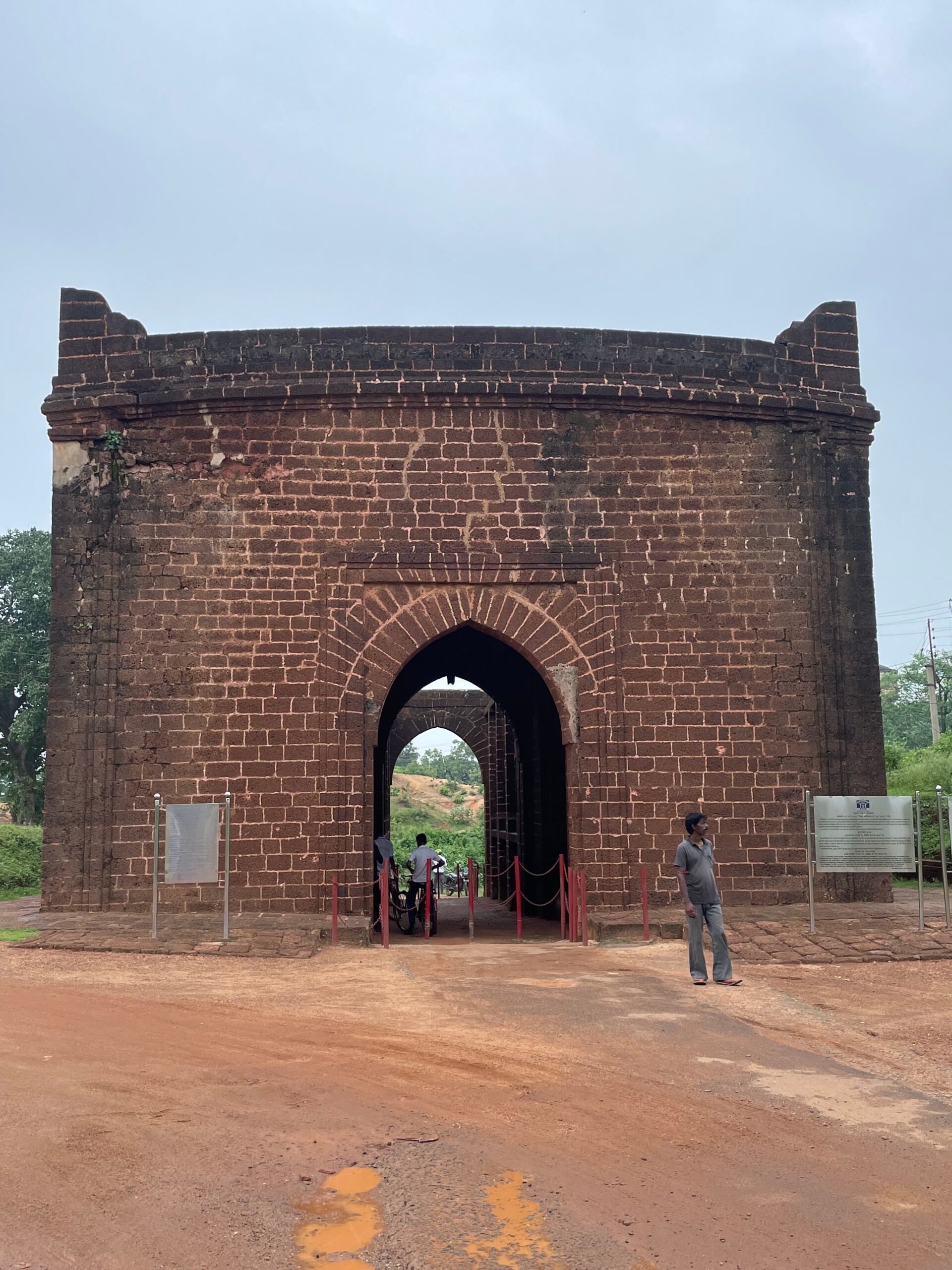
An old gate in Bishnupur city preserved as part of the monuments
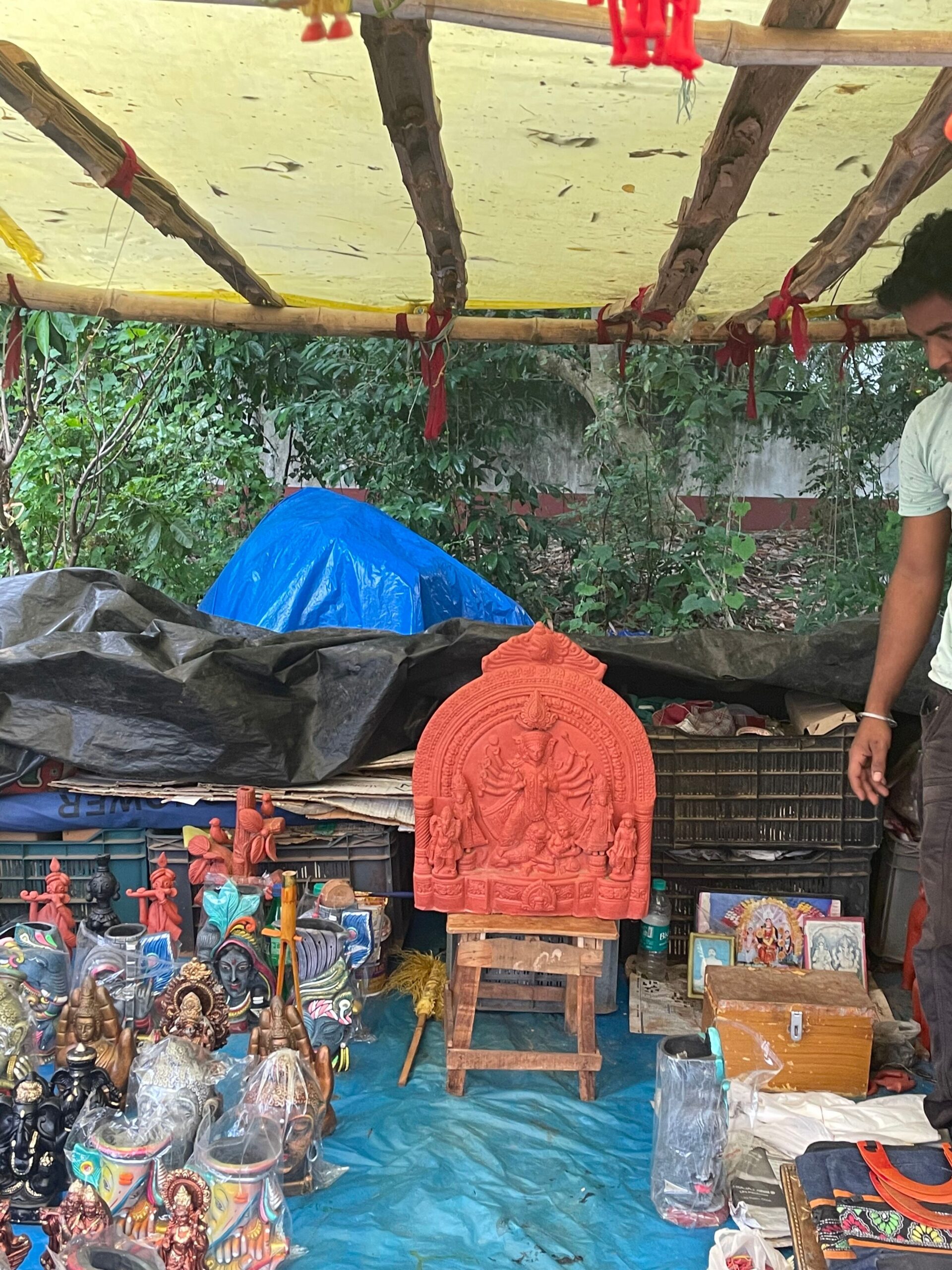
An exquisite Durga sculpture being sold outside the ShyamRai temple. Terracota jewellery and other clay idols are sold here.

The Lalji temple built of laterite stone was built by King Vira Singh in 1658 CE.

The Rasmancha temple is made of laterite stone and upper part is made of bricks. During the Vaishnava Ras festival, celebrated in West Bengal, all the Radha Krishna idols of Bishnupur town used to be brought here for worship. The annual festival was held till 1932.
Text and pics by Papiya Bhattacharya
